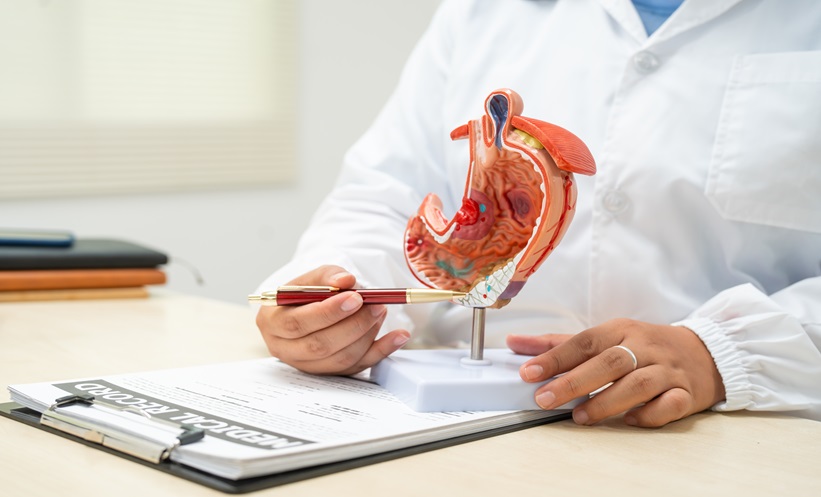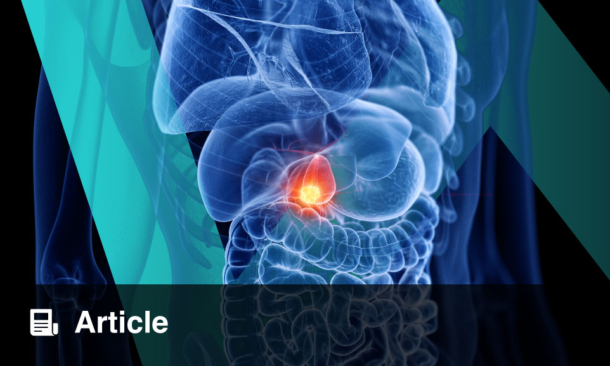Author: Aleksandra Zurowska, EMJ, London, UK
Citation: EMJ Gastroenterol. 2025;14[1]:28-31. https://doi.org/10.33590/emjgastroenterol/LOLR2998
![]()
AN ENLIGHTENING session delivered at the annual United European Gastroenterology (UEG) Week 2025, held in Berlin, Germany, brought together leading experts to explore the functional outputs of the gut microbiome, the real-world value of probiotics, and faecal microbiota transplantation in irritable bowel syndrome (IBS).
SPECIFIC FUNCTIONS OF THE GUT MICROBIOTA
Kicking off the session, Marius Vital, Institute of Medical Microbiology and Hospital Epidemiology, Hannover Medical School, Germany, argued that microbiome science and clinical translation progress faster when priorities shift to functionality over taxonomy. He listed Escherichia coli as an example of this. Despite being classified as a single species, its strains differ significantly in function, with some existing as harmless commensals and others serving as pathogens. Vital stated that this is a fundamental flaw of a name-based approach in microbiome research, and suggested that understanding the gut microbiota through the lens of functionality reveals a more accurate depiction of health and disease.
Central to Vital’s talk was the concept of short-chain fatty acids (SCFA), such as acetate, propionate, and butyrate. These are the main energy products of anaerobic bacterial fermentation in the colon and are essential to maintaining intestinal health, with butyrate serving as a primary energy source for epithelial cells and playing crucial roles in preserving barrier integrity and suppressing inflammation. However, he noted that “not all SCFAs are created equal,” stressing that their distinct chemical properties and receptor targets mean that their effects on the host are diverse.
Vital then illustrated how the gut’s anaerobic environment forces bacteria to rely on fermentation, which, in healthy individuals, generates tens of grams of SCFAs daily, although most are rapidly consumed before reaching circulation. This discrepancy means that stool and plasma measurements tell different stories; therefore, the choice of sampling site must match the biological question.
Vital then moved to introducing the systems biology and in vitro cultivation models that his team uses to explore how diet and microbial composition shape SCFA output. Their findings show that prebiotic substrates, such as inulin and resistant starch, boost butyrate production; yet, responses differ markedly between individuals.1 Those with a microbiota low in Ruminococcus species, for example, respond better to inulin than to resistant starch. This, Vital argued, reinforces the need for personalised nutrition strategies guided by functional profiling.
He also warned that, while dietary fibres are widely considered beneficial, they can backfire in inflammatory conditions such as ulcerative colitis. Undegraded fibres may act as antigens, activating innate immune receptors and worsening inflammation. To mitigate this, his group now tests fibre degradability ex vivo before clinical application.
Concluding his talk, Vital urged the field to move beyond descriptive microbiome studies towards mechanistic, function-centric models that integrate genomics, metabolomics, and patient stratification to deliver targeted, safe, and rational microbiome-based therapies.
SHOULD WE GIVE PROBIOTICS A CHANCE? FOR WHAT?
Continuing the session, Vanessa Stadlbauer-Köllner, Department of Gastroenterology and Hepatology, Medical University of Graz, Austria, shifted the focus from mechanisms to clinical application, exploring how probiotics can, and sometimes cannot, translate microbiome science into patient benefit. She reminded the audience that probiotics are defined as live microorganisms, which, when administered in adequate amounts, create a health benefit for the host. However, despite decades of research and a proliferation of products on the market, clinical evidence remains mixed and context specific.
Stadlbauer-Köllner then moved on to examining the data behind three of the most common probiotic indications: acute gastroenteritis in children, IBS, and antibiotic-associated diarrhoea. She continued to explain that in paediatric gastroenteritis, meta-analyses have consistently shown a modest (roughly 1 day) reduction in diarrhoea duration.2 However, interpretation varies across guidelines. While German guidelines suggest that probiotics may be considered, the UK’s National Institute for Health and Care Excellence (NICE) guidelines advise against routine use, and the European Society for Paediatric Gastroenterology, Hepatology and Nutrition (ESPGHAN) recommends only a handful of well-studied strains. She noted that “the same evidence base can lead to three completely different conclusions.”
Turning to IBS, she explained that while probiotics have demonstrated symptom improvement in some trials, results remain heterogeneous. Effectiveness depends heavily on strain, dose, and patient subgroup, reflecting the complex interplay between microbial function, immune modulation, and intestinal barrier activity. Probiotics should not be prescribed as a uniform therapy, but rather as targeted interventions, with clinicians setting realistic expectations and clear stop-criteria, she explained.
Moving on to antibiotic-associated diarrhoea, Stadlbauer-Köllner explained that Cochrane data and meta-regression analyses show a risk reduction of up to 60%, but only when probiotics are started within 48 hours of initiating antibiotic therapy.3 When given later, the protective effect disappears. This timing nuance, she explained, also clarifies why studies administering probiotics after antibiotic courses, such as the trial by Suez et al.,4 found delayed microbial recovery rather than benefit. In clinical reality, prevention and restoration are distinct goals.
Stadlbauer-Köllner concluded her talk by acknowledging practical barriers: limited reimbursement, variable product regulation, and inconsistent strain availability across Europe. Nonetheless, she argued that the evidence supports probiotic use in select contexts, provided clinicians “treat the strain as seriously as a drug,” know when to start it, and ensure that patients understand both the limitations and potential of this accessible form of microbiome modulation.
PROPOSING FAECAL MICROBIAL TRANSFER FOR IRRITABLE BOWEL SYNDROME?
Concluding the session, Reetta Satokari, Faculty of Medicine, University of Helsinki, Finland, addressed one of the field’s most debated questions: can faecal microbiota transplantation (FMT) be justified for IBS?
Satokari explained that while FMT has proven highly effective for recurrent Clostridioides difficile infection, evidence in IBS remains inconsistent and uncertain. She further explained that a recent meta-analysis by Lo et al.5 found no significant difference between FMT and placebo for primary symptom outcomes, with only a small signal in trials using endoscopic delivery: a finding too fragile to guide clinical practice.
Satokari then discussed the ongoing debate over donor engraftment, the process by which transplanted microbes colonise the recipient’s gut. She explained that some studies, such as the one by Ianiro et al.,6 suggest that greater donor strain engraftment predicts clinical success. However, others, such as Schmidt et al.,7 find that symptoms either improve or fail to improve, independently of colonisation.
Presenting data from her own IBS cohort, Satokari showed that recipients’ microbiota became strikingly donor-like after transplantation, particularly through the expansion of Prevotella species, and that these compositional and functional shifts persisted for up to a year. Yet, intriguingly, symptom scores did not correlate with engraftment or microbial diversity. She concluded that: “Engraftment may be necessary for change, but it is not sufficient for relief.”
This disconnect, she explained, underscores the complexity of IBS as a disorder of gut–brain interaction, where microbial, immune, and psychological factors converge. Satokari suggested that better patient stratification, such as targeting post-infectious IBS, may reveal subgroups who are more likely to respond. Combining FMT with dietary modulation or behavioural interventions could also enhance outcomes by aligning microbial and metabolic environments.
Despite enthusiasm, Satokari cautioned against the routine clinical use of FMT for IBS under current protocols, recommending it only as compassionate therapy in refractory cases and within structured follow-up frameworks. She emphasised that the field must now focus on identifying “super donors,” refining dosing strategies, and designing trials that capture not just microbial change but meaningful clinical improvement. Her closing message was pragmatic: the gut ecosystem can be reshaped, but transforming microbial success into patient relief remains the next, and most urgent, frontier.







